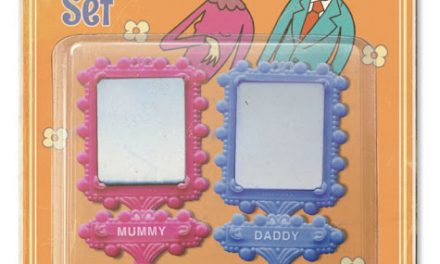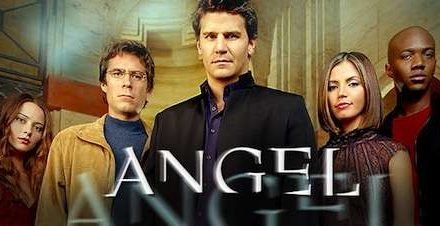Confirmed keynote scholars: Enrique Ajuria Ibarra, Xavier Aldana Reyes, Kyle Bishop, Kevin Corstorphine, Justin Edwards, Anya Heise-von der Lippe, Michael Howarth, Evert J. van Leeuwen, Sorcha Ní Fhlainn, Elizabeth Parker + Michelle Poland, David Punter, Julia Round, Christy Tidwell, Jeffrey Andrew Weinstock, Maisha L. Wester.
Website: https://popmec.hypotheses.org/3576
Defining the Gothic has proven to be a difficult and elusive task for scholars, possibly as this literary current often pervades cross-genre narratives and media, embracing many topics related to the very essence of human nature. Indeed, the nature of whatever it may mean to be human seems to be at the core of William Veeder’s definition the Gothic as a healing mechanism found in societies that “inflict terrible wounds upon themselves,” especially in order “to help heal the damage caused by our embrace of modernity” (1998: 21). This wide definition of the Gothic acknowledges the pervasiveness of the genre and its ramifications when it comes to reacting—“healing and transforming” (1998: 21)—to the perils of societal structures and thus confronting the manifold disruptions of social and moral codes, as well as the actual and imagined fears intrinsic to the cyclical crises our societies face. The advent of modernity represented a major concern in the post-revolutionary United States. Inspired by the literary genre that emerged in 18th century England and its subsequent evolutions, Gothic fiction became a suitable means for exploring the newfound anxieties relating to the specific configurations of the colonial societies and their challenges as new communities. Drawing on European gothic tropes and arguably starting with Charles Brockden Brown’s tales, American Gothic fiction has been popular throughout the centuries up to the present day. Furthermore, many popular culture products engage—in more or less overt ways—with gothic elements in the attempt to confront myriads of conflicts, anxieties, and epochal concerns that have marked our societies.
The struggle between dictated social conventions and the repressed, multifaceted self—liable to fragmented identity and ambiguity—has been central to Gothic narratives. Hidden moral, social, and scientific aspirations emerge, often accompanied by the tension toward a liberation of repressed desires and the fear of the consequences of such liberation. Moreover, the creation of taboos and moral codes set hierarchical boundaries for society to theoretically function without disruption. Gothic characters and dynamics blur such boundaries, thus facing social and psychological dilemmas peculiar to contemporary contexts, and strugglingagainst uncertainty, mistaken self-conceptions and perceptions of reality, contradictory behaviors, feelings of guilt, and exasperation. Terror might lie in altered psychological states, be intrinsic to an incomprehensible or unacceptable alien outsider, or haunt the places where a character would naturally feel safe.
Gothic modes have also been characterized by the notions of disturbance and indulgence, or by a peculiar sense of irony and self-consciousness. An underlying presence of the supernatural and the unspeakable quality of many anxieties facilitate revelations that often remain implicit to a complex narrative structure. Gothic narratives are populated by devil figures and dreamlike sequences that blur the line between the conscious and the unconscious. The conflicts permeated by gothic modes tackle the unresolved battle between good and evil, the tension between the body and the psyche, the passage from childhood to adulthood, and the transgression of social and moral codes. The gothic panoply includes spatial tropes (isolated places, Medieval monasteries, caves, graveyards, ruins, family houses, etc.); claustrophobic urban settings or overwhelming wilderness; scientific experiments that challenge divinity and defy the boundaries of knowledge; allegoricalnon-human entities; anxieties toward the future and technocratic realities; and ambivalent stances toward the past that oscillate between fear and attraction, and are fueled by the instability of memories.
In recent years, many popular culture artifacts outside of the usual terrain of horror and the Gothic have exploited Gothic modes to reveal the terrors of everyday life. Sophisticated narratives have employed gothic modes to take on disruption, questioning reality, as well as challenging the boundaries of conformity and raising issues related to xenophobia, death, social anxieties , alienation, displacement, and self-consciousness. Because of the versatility and diversity of gothic modes and their—more or less subtle—exploitation across media and popular culture products, we call for contributions fitting the thematic lines described below.
This is a call for presentations that will be organized thematically in different sessions, as detailed below. However, the analysis of any type of popular culture products across media is welcome. We invite presentations on gothic modes in film, (web)tv series, comics and graphic novels, video games, animation, products aimed at children and young adults, genre fiction, and theatrical performances.
Each session will be composed of a talk with a keynote speaker (30 min. approximately) followed by panels, each organized as a sequence of short presentations (each 12-15 min. maximum) and a moderated discussion among participants. Scholars at any stage of their career are welcome, and the panels will be organized accordingly.
Panels will be pre-recorded in their entirety: the presenters and moderators will agree on a date for the pre-recording , with a limited public composed of PopMeC editors. The session will be post-produced and uploaded to the PopMeC YouTube channel and social media platforms, according to the series’ calendar (to be defined, starting early April with an introductory session and streaming a new session every week). The participation in the sessions is free of charge.
PopMeC accepts presentation proposals (300-350 words approx.) about any aspect related to the call. The proposals will be peer-reviewed and selected on a rolling basis by our editorial team and external collaborators, who will get back to you as soon as possible. Please, send your proposal to popmec.call@gmail.com, attaching your text, inclusive of a short bio (100-120 words), name, affiliation, and email contact in a single file (.doc, .docx, .odt).
Organizing committee: Anna Marta Marini (PopMeC chief editor), Mónica Fernández and Trang Dang (board editors), associate editors Laura Álvarez, Paula Barba, Michael Fuchs, Sofía Martinicorena, Marica Orrù, and Dina Pedro (events assistant).
THEMATIC SESSIONS:
- GOTHIC AND THE ETHNIC OTHER + BODIES AND BOUNDARIES
Gothic narratives revolving around invading non-humans and unspoken anxieties related with the assumed dangers of “racial intrusion” have been used to elaborate more or less overtly on ethnic otherness. The contact and confrontation with the ethnic other have been linked to the unwanted blurring of both metaphorical and material boundaries. The ethnic minority body has been perceived as the unsettling product of a physical and cultural miscegenation, an unstable blend evoking ambiguous representations transgressively exotic and immorally, savagely inferior altogether. At the same time, Gothic narratives protagonized by ethnic minority subjects have been created, giving voice to their own anxieties and perceptions of ethnic boundaries and xenophobic terrors.
Deadline for presentation proposals: March 7, 2021
- ECOGOTHIC
American culture has maintained a strained relationship with nature and the environment ever since the arrival of the first settlers. The vast lands that they encountered were conceptualized simultaneously as a bountiful Garden of Eden that would facilitate the colonial experience, and as a “howling wilderness” that threatened the first, precarious settlements. Environment-related anxieties have permeated into all cultural forms, often through Gothic imagery. More recently, environmental concerns have more to do with the durability of the planet and the increasingly worrying consequences of human activities upon it, often resulting in (post)apocalyptic narratives.
Deadline for presentation proposals: March 14, 2021
- BODIES AND BOUNDARIES + GENDER, SEXUALITY AND THE GOTHIC
Body-related anxieties have often been connected to gender, sexuality, and physical otherness, as fears and struggles intrinsic to the wish for liberating repressed, unconventional, or assumedly immoral desires. Socially imposed boundaries blur, connecting with feelings of guilt, degeneration, excess, disruption. The corporeal “other” becomes the image of transgression, depravity, and the breaking of taboos related to the body in all its forms. Themes related to sexual pleasure, physical abjection, body transformation, and gender become at the same time stigmas and boundaries to cross in order to express and face one’s own true self.
Deadline for presentation proposals: March 21, 2021
- CHILDREN AND YA GOTHIC STUFF
Children and YA gothic narratives have dealt with anxieties related with development, a growing awareness of the self and one’s own sexuality, the transformations within the family environment, the increasing necessity to cope with external contexts. The creation of gothic worlds—belonging to either an alternative reality or the characters’ imagination—has also been exploited as a means to represent the complex passages between different stages of life, coming-of-age experiences, and conflicts internal to the characters’ everyday life as children.
Deadline for presentation proposals: March 28, 2021
- AUTOMATA, CYBER TERROR AND TECHNOCRATIC REALITIES
The extent of contemporary human reliance on technology has stirred up new embodiments of the uncanny elements found in traditional gothic horror. As a response to the fear of technological advances, anxieties about the future and parasocial relationships, robots and automata have replaced the ghouls of our nightmares. Similarly, in lieu of a haunted mansion or a labyrinth, we come to find the liminal space of our technological anxieties represented in our immaterial existence in the online realm.
Deadline for presentation proposals: April 4, 2021
Presenters will be welcome to submit an article related to their presentation topic, to be peer-reviewed and published on our platform (https://popmec.hypotheses.org ISSN: 2660-8839) as part of a special section dedicated to the subject . According to the feedback and participation the series raises, we will consider proposing the publication of an edited volume collecting selected contributions.
A few thematic suggestions just to get your inspiration started
Gothic and the ethnic other + bodies and boundaries
Angel Heart (1987, film); Beatriz at Dinner (2017, film); Eve’s Bayou (1997, film); His House (2020, film); Get Out (2017, film), Little Fires Everywhere (2020, TV series); Lovecraft Country (2020, TV series); Night of the Living Dead (1968, film); Penny Dreadful: City of Angels (2020, TV series); The Skeleton Key (2005, film); The Alienist (2018-present, TV series); The Twilight Zone (original and reboot TV series); Us (2019, film); Watchmen (2019, TV series).
Ecogothic
Annihilation (2018, film); Love and Monsters (2020, film); Snowpiercer (2020, TV series); Southern Reach trilogy (2020, novels by Jeff VanderMeer); Swamp Thing (2019, TV series); The Happening (2008, film); The Last Winter (2006, film); The Village (2004, film); The Witch (2015, film); Penny Dreadful (2014, TV series).
Bodies and boundaries + gender, sexuality and the Gothic
Basic Instinct (1992, film); Cat People (1982, film); Dead Ringers (1988); Dracula (in most iterations); Hannibal (2013-2015, TV series); Hard Candy (2005, film); Heart-Shaped Box (2007, novel by Joe Hill); Sharp Objects (2018, TV series); The Alienist (2018-present, TV series); The Beguiled (1971, 2017, film); The Yellow Wallpaper (1892, novel by Charlotte Perkins Gilman); True Blood (2008, TV series); Twin Peaks (1990-2017).
Children and YA gothic stuff
A Series of Unfortunate Events (date, books; date, film franchise; date, TV series); Chilling Adventures of Sabrina (2014-present, comic; 2018-present, TV series); Cirque du Freak (2000-2004, books; 2009, film); Coraline (2002, novel; 2009, film); Corpse Bride (2005, film); Frankenweenie (2012, film); Miss Peregrine’s Home for Peculiar Children (2011, novel; 2013, comic; 2016, film).
Cyber terror and technocratic realities
A Normal Lost Phone, Another Lost Phone: Laura’s Story (games, Accidental Queens, 2017); Black Mirror (2011-2019, TV series); Cam (2018, film); Coherence (2013, film); Searching (2018, film), Hellraiser: Hellworld (2005, film); HOST (2020, film); H0us3 (2019, film); Open Windows (2014, film); Peripheral (2017, film); Pulse (2006, film); Sequence Break (2018, film); The Lawnmower Man (1992, film).





